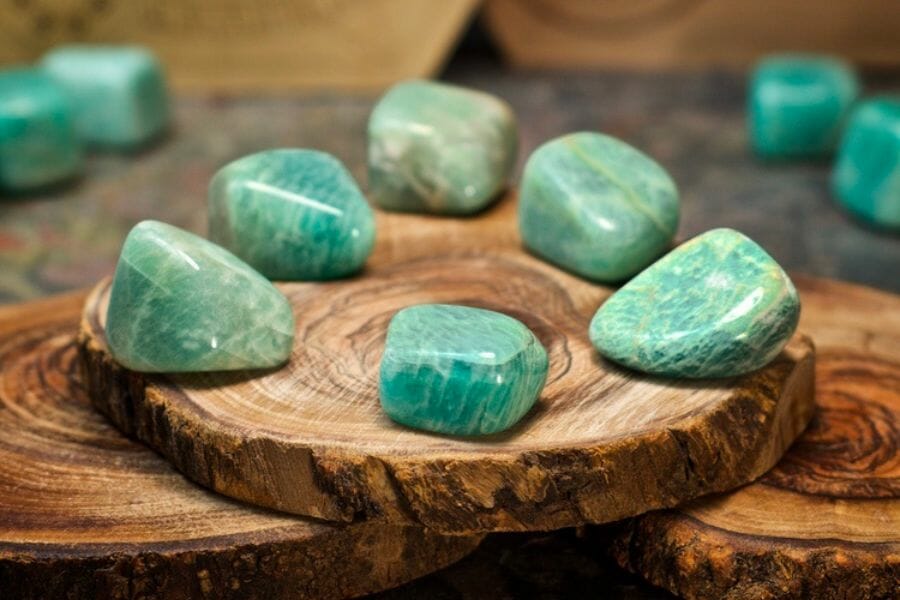Finding crystals can be a rewarding adventure, offering a unique way to explore the natural beauty and geology of the region. Whether you’re a seasoned rockhound or just getting started, knowing where to look is key to uncovering these hidden treasures.
In this state, a variety of locations provide opportunities to discover different types of crystals. From rocky outcrops in the mountains to stream beds that carry sparkling surprises, each area offers its own unique finds for those willing to search.
We can help you get started with some places you can explore for crystals below!
Crystals you can find in the US
The United States offers a wide range of crystals that reflect its diverse geology. From vibrant gems to more subtle mineral formations, there’s something to discover in nearly every region.
Calcite
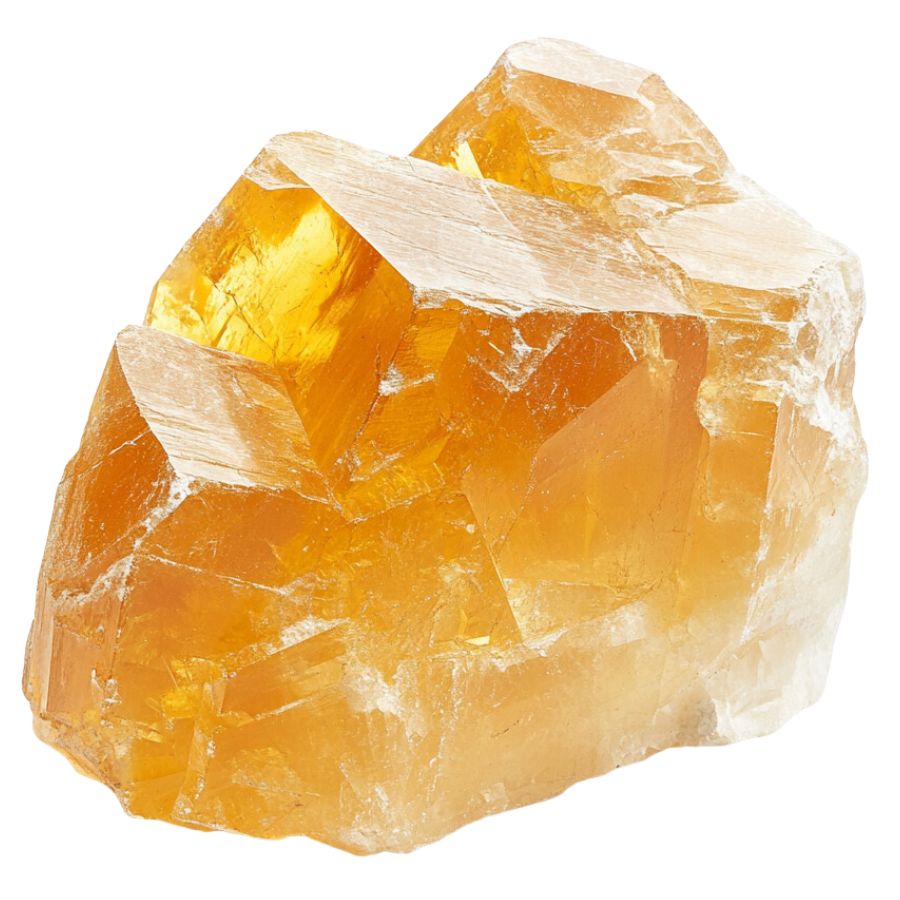
With a variety of forms and a unique property of double refraction, calcite allows objects viewed through the crystal to appear doubled. This mineral can appear in a spectrum of colors, with pure forms typically being transparent or white.
In addition, calcite reacts vigorously with acids, which aids in distinguishing it from other minerals. It also frequently contributes to the structure of sedimentary rocks such as limestone.
Gypsum
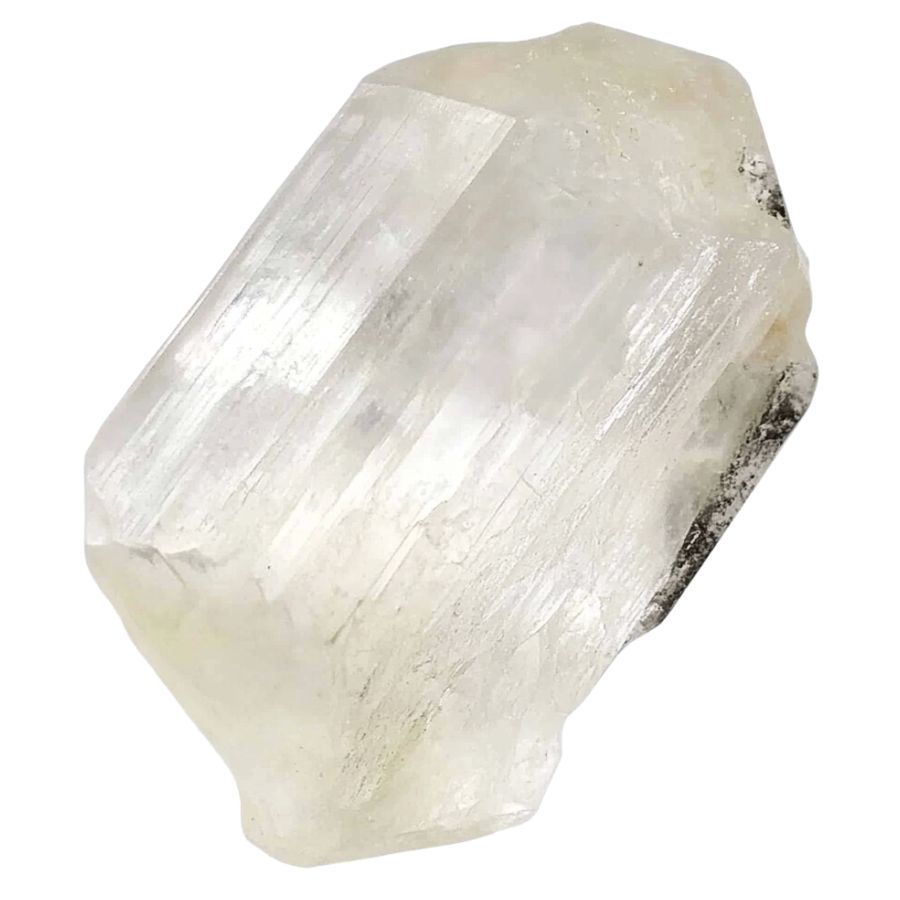
Gypsum’s notable softness allows it to be easily scratched with just a fingernail, often presenting as white or very light-colored in its pure form.
It manifests in both crystalline forms, like selenite, and massive forms such as alabaster, making it versatile in use and appearance.
Gypsum is also essential in the construction industry and is a key component in the manufacture of plaster and drywall.
Fluorite
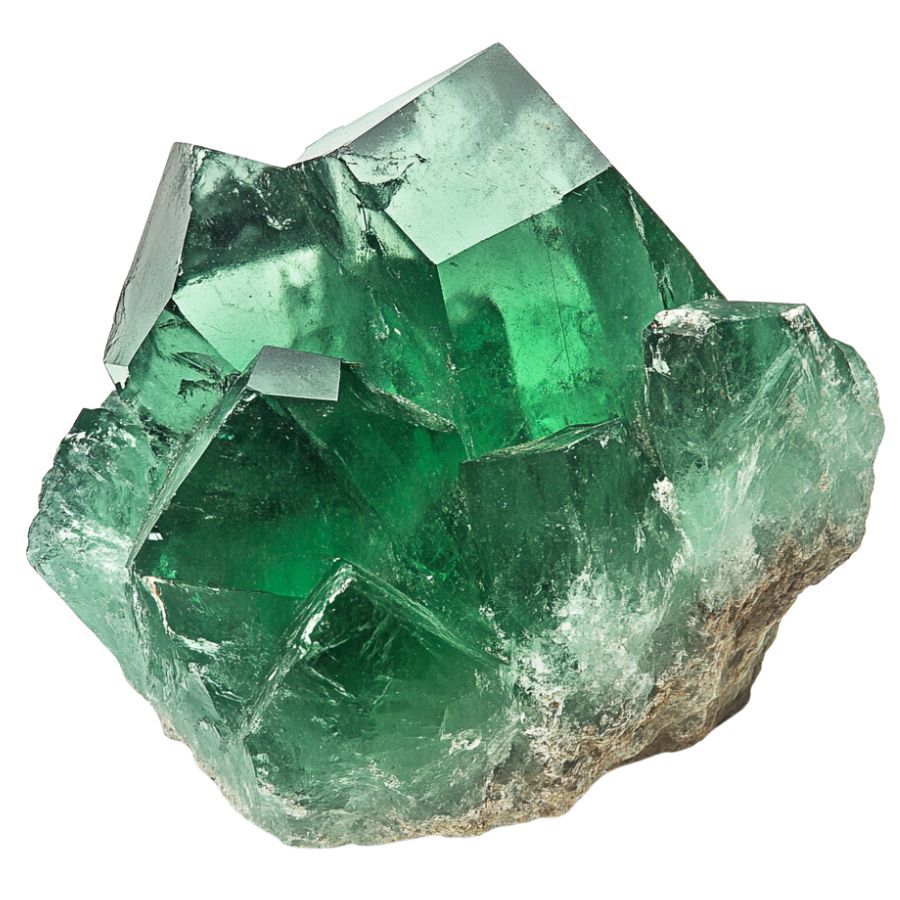
Fluorite comes in a wide range of vibrant colors, including purples, greens, blues, and yellows, and is known for forming in well-defined cubic crystals.
Beyond this, fluorite exhibits fluorescence under ultraviolet light! It can also be used in various industrial applications, including as a flux in steelmaking.
Galena
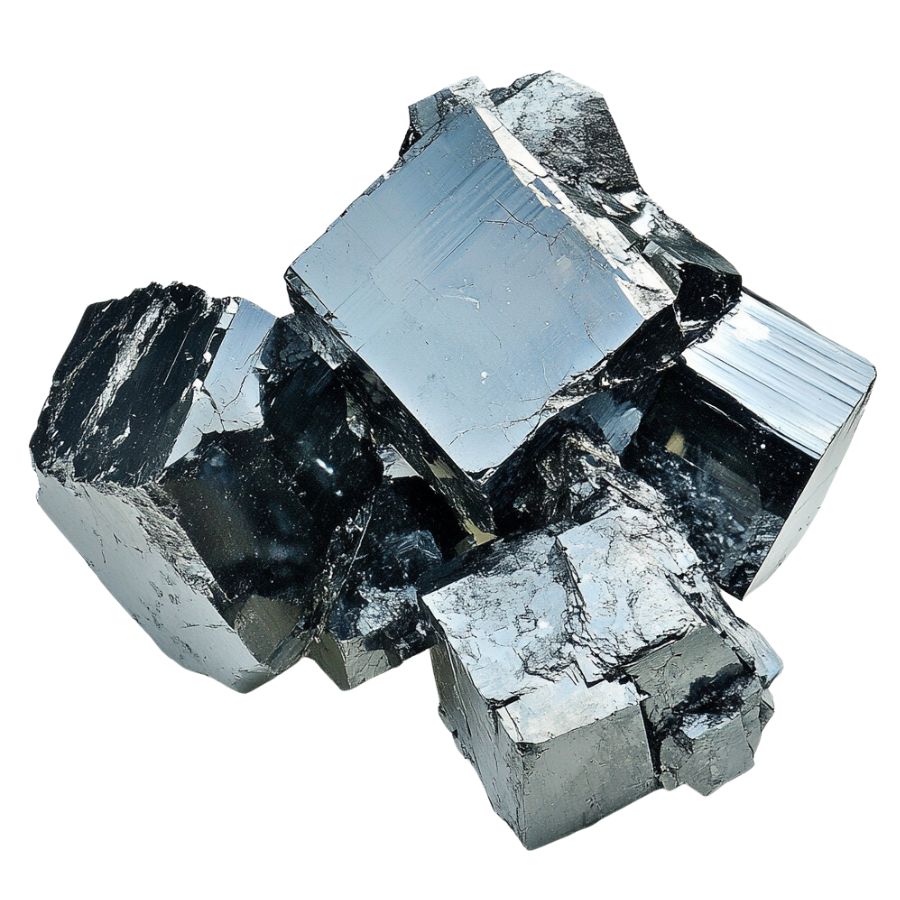
Galena distinguishes itself with a metallic luster and high density, typically found in a cube-like form. It serves as the primary ore of lead, making it important in the metal industry, while its shiny, silver color attracts collectors.
Not only does its appearance make it a subject of interest, but its weight and texture provide tangible lessons in mineral density and metallic properties. Galena also often contains traces of silver, adding to its commercial and educational value.
Corundum
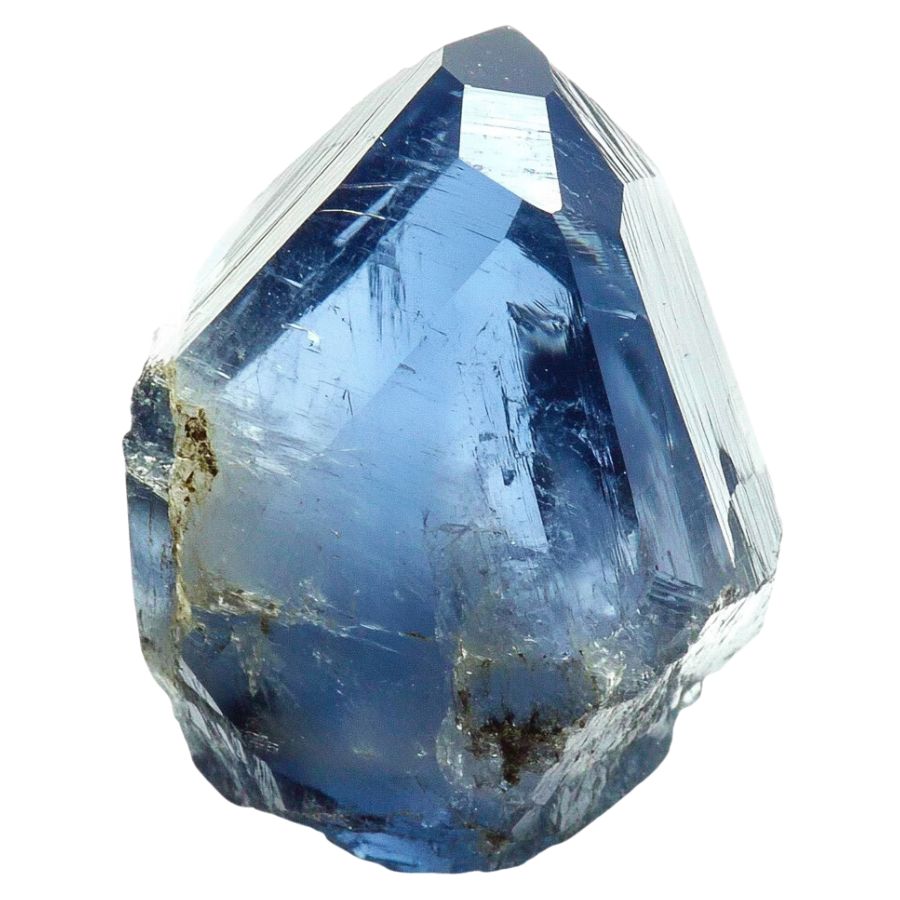
Corundum is a mineral that comes in a variety of colors, though it is typically transparent or gray. Its most famous forms are sapphires and rubies, which are prized for their vibrant blue and red hues.
The mineral is known for its remarkable hardness, ranking just below diamond on the Mohs scale. This durability makes corundum ideal for industrial abrasives and cutting tools, as well as a popular choice for fine jewelry.
Quartz
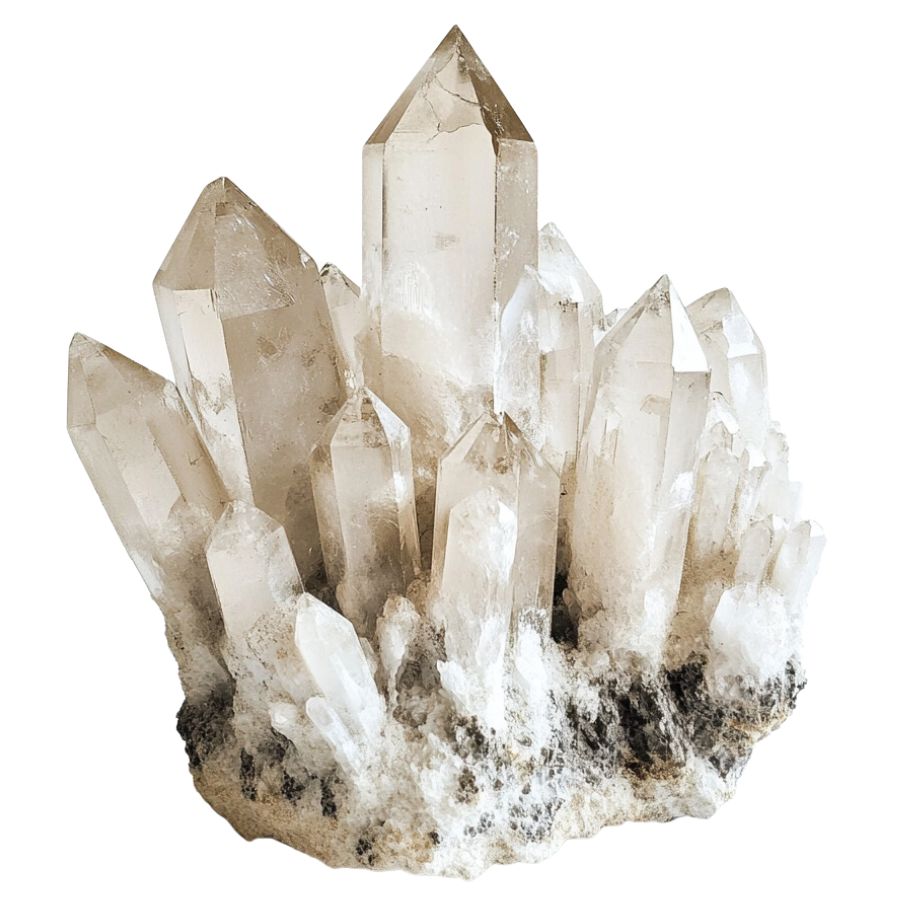
Quartz is among the most common minerals in the Earth’s crust and is prized for its durability and variety. It forms in a wide range of colors and types, from clear rock crystal to purple amethyst.
The mineral is notable for its hardness and durability, which contribute to its use in a variety of applications. Quartz is also popular in the manufacturing of electronics and watches due to its piezoelectric properties, which allow it to convert mechanical pressure into electrical energy.
Pyrite
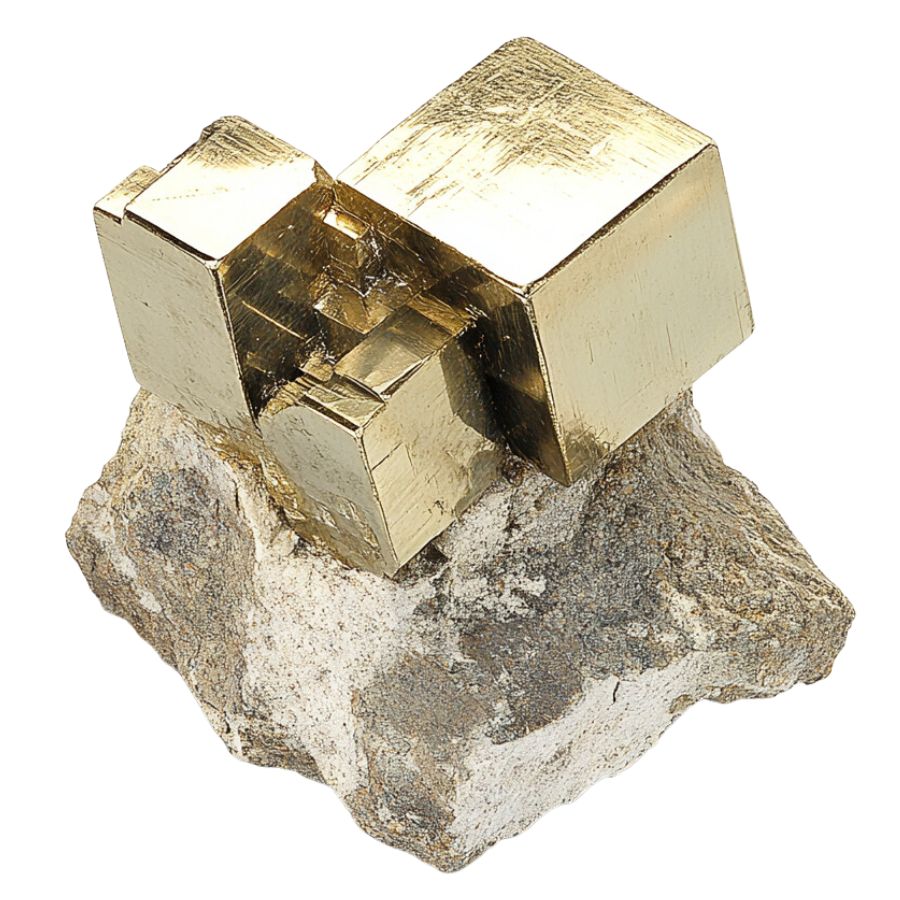
Often mistaken for gold due to its metallic luster and pale brass-yellow hue, pyrite is known colloquially as “fool’s gold.” Its characteristic cube-shaped crystal formations look man-made but are actually completely naturally formed!
Pyrite also has historical importance in producing sulfur dioxide for sulfuric acid production.
Rhodochrosite
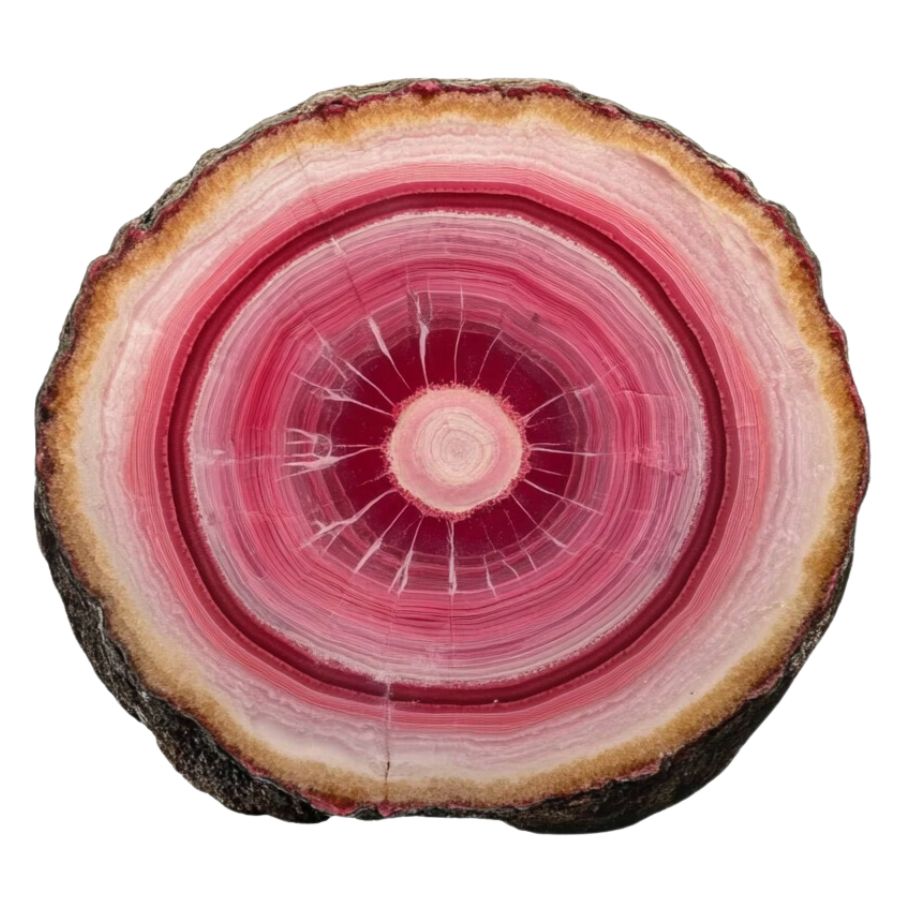
Rhodochrosite stands out with its rich pink and red hues, making it highly desirable as both a mineral specimen and a gemstone.
It typically forms in layered or stalactitic structures, with bands of colors that showcase how it grew over millions of years.
Beyond its beauty, rhodochrosite is significant as the main source of manganese, an essential element used in metal alloys.
Rhodonite
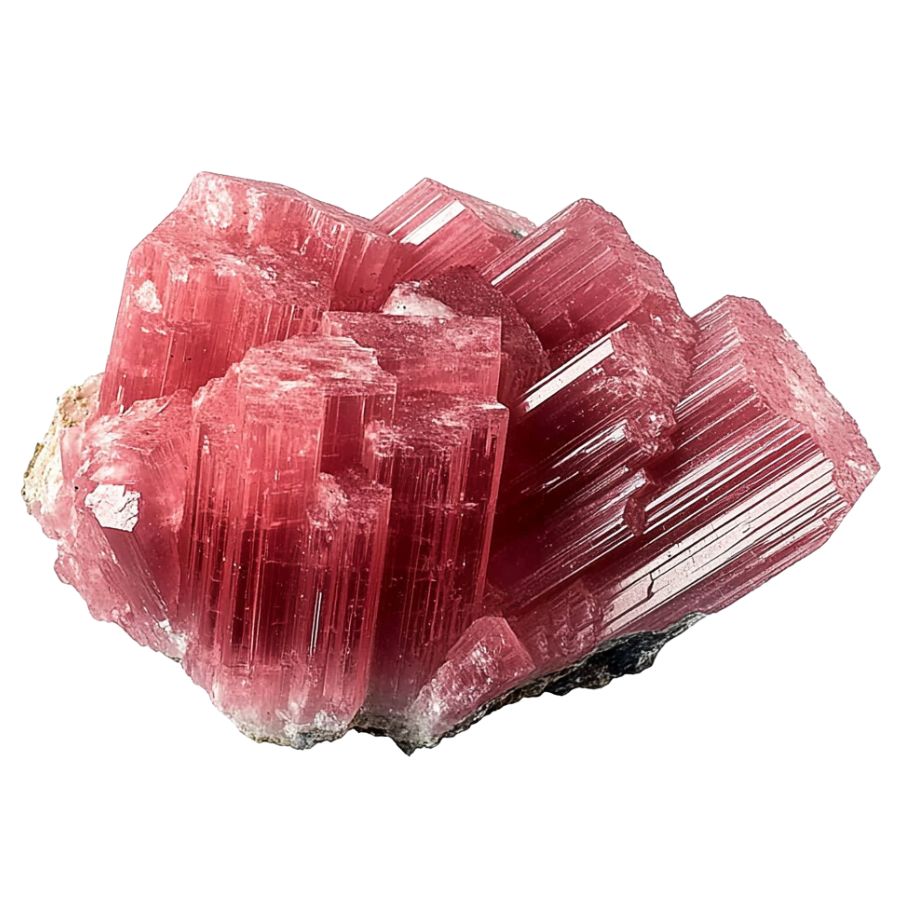
Appreciated for its deep pinks and reds, often complemented by black manganese oxide veins, rhodonite presents a dramatic appearance. It is typically found in metamorphic rocks and is used both as an ornamental stone and in jewelry.
In geology, rhodonite is significant for its role in metamorphic processes and its association with other manganese-rich minerals. It can be found in metamorphosed sedimentary rocks and is sometimes used as an indicator of the presence of manganese deposits.
Vivianite
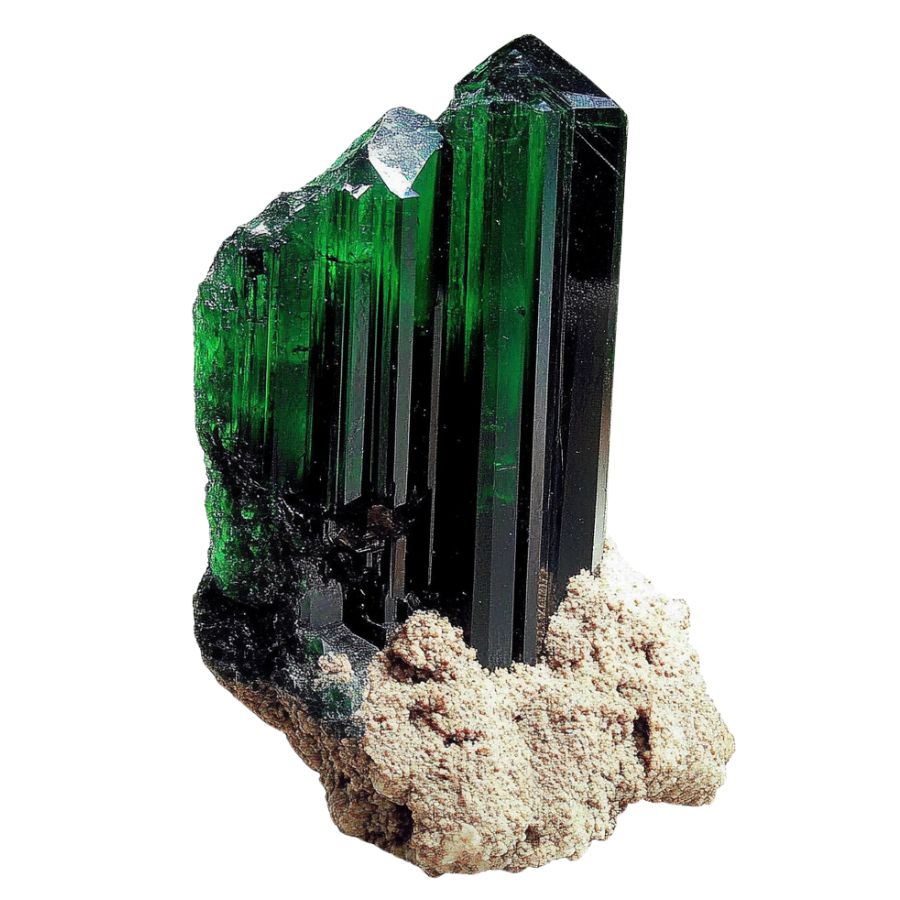
Vivianite, an iron phosphate mineral, emerges in low-oxygen environments like peat bogs or iron-rich deposits. Its striking blue to green color, which can change to a lighter shade over time due to oxidation, makes it a distinctive mineral.
Found in various geological settings, vivianite provides clues about the local conditions and the presence of phosphate deposits.
The Types of Montana Crystals You Can Find
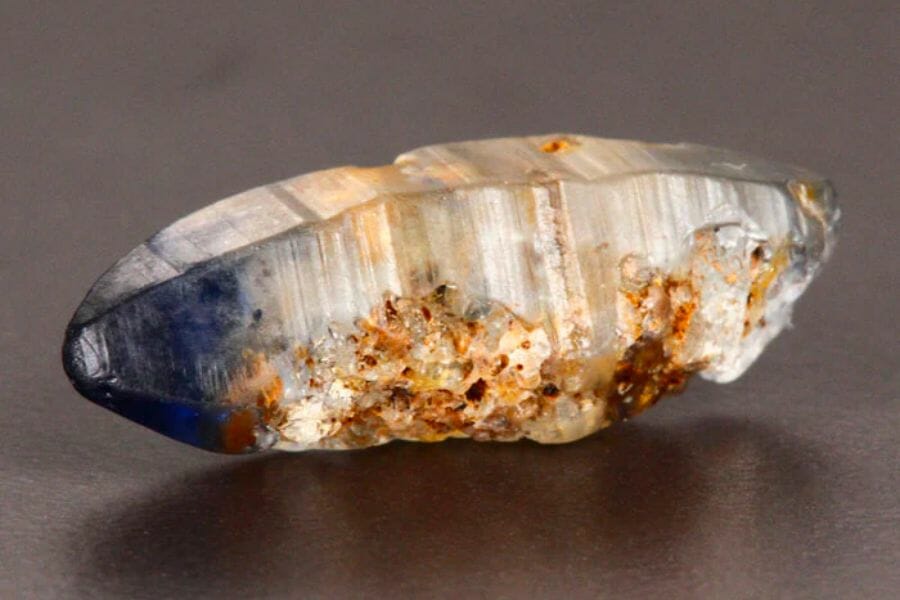
Well-known for its rich deposits of crystals, Montana boasts of having some of the most breathtaking crystal formations in the world. The variety of crystals here is a testament to our state’s geologic diversity. From its volcanic deposits in the west to the sedimentary rocks in the east, Montana offers crystal enthusiasts a wide range of options for exploration and discovery.
Rare crystals found in Montana
- Amazonite
- Amethyst
- Aquamarine
- Dumortierite
- Kyanite
- Rhodochrosite
- Rhodonite
- Ruby
- Sapphire
- Tremolite
- Vanadinite
More common crystals found here
- Agate (Moss)
- Apatite
- Azurite
- Carnelian
- Chalcedony
- Chalcopyrite
- Chrysocolla
- Copper
- Diamond
- Fluorite
- Galena
- Garnet
- Hematite
- Jasper
- Malachite
- Muscovite
- Onyx
- Opal
- Pyrite
- Quartz (Clear, Smoky)
- Serpentine
- Topaz
- Tourmaline
What rough crystals look like
When you’re out looking for crystals on your own it’s important to know what you’re looking for. This is what you need to look out for:
Look for exteriors like this
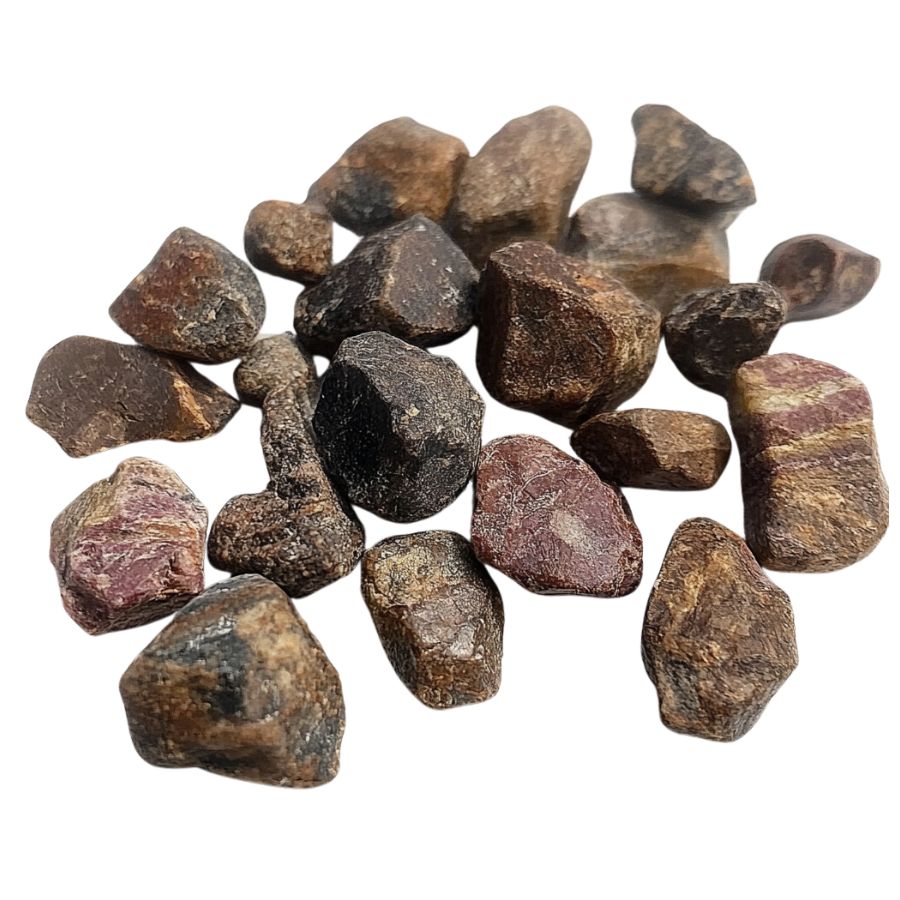
When you’re out searching for crystals in the wild, it’s essential to keep in mind that what you find won’t look like the polished stones you see in stores. One important tip is to consider what certain crystals look like in their raw, natural form.
Without the shine and smooth finish, crystals might appear rough, with jagged edges or earthy tones masking their true beauty. Understanding this can help you spot potential finds that might otherwise be overlooked.
Examine the crystal structure and shape
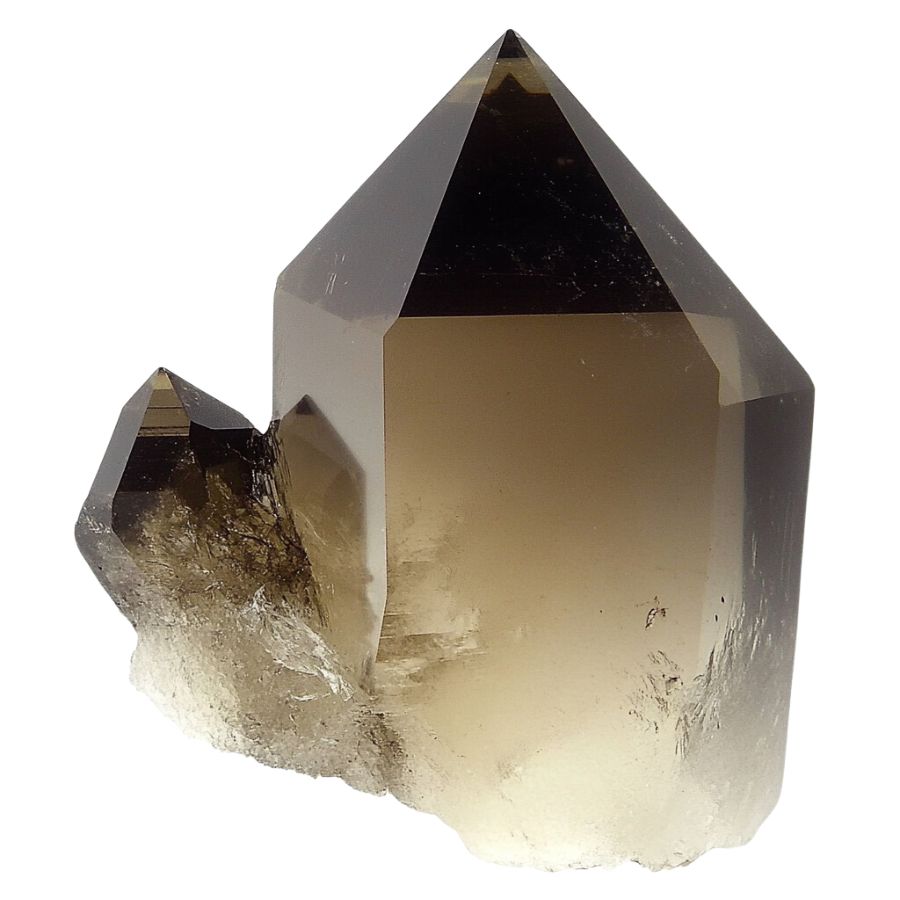
Crystals often form in specific geometric patterns that can be key to identifying them. For example, quartz is known for its hexagonal prisms, while halite typically forms cubic shapes.
By recognizing these distinct patterns, you can differentiate between various types of crystals and better understand what you’ve found.
Observe color
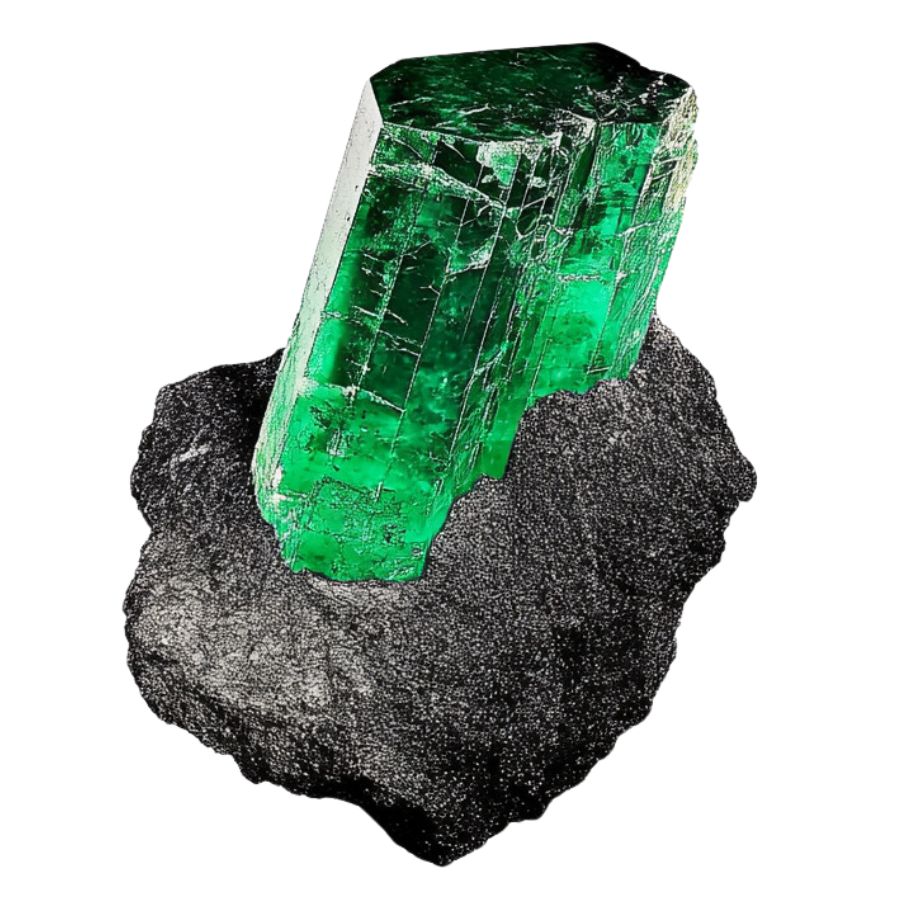
Some crystals are known for their distinct hues, like the deep purple of amethyst or the vibrant green of emerald. However, not all crystals will have strong colors; some may be clear or only slightly tinted.
Check the luster
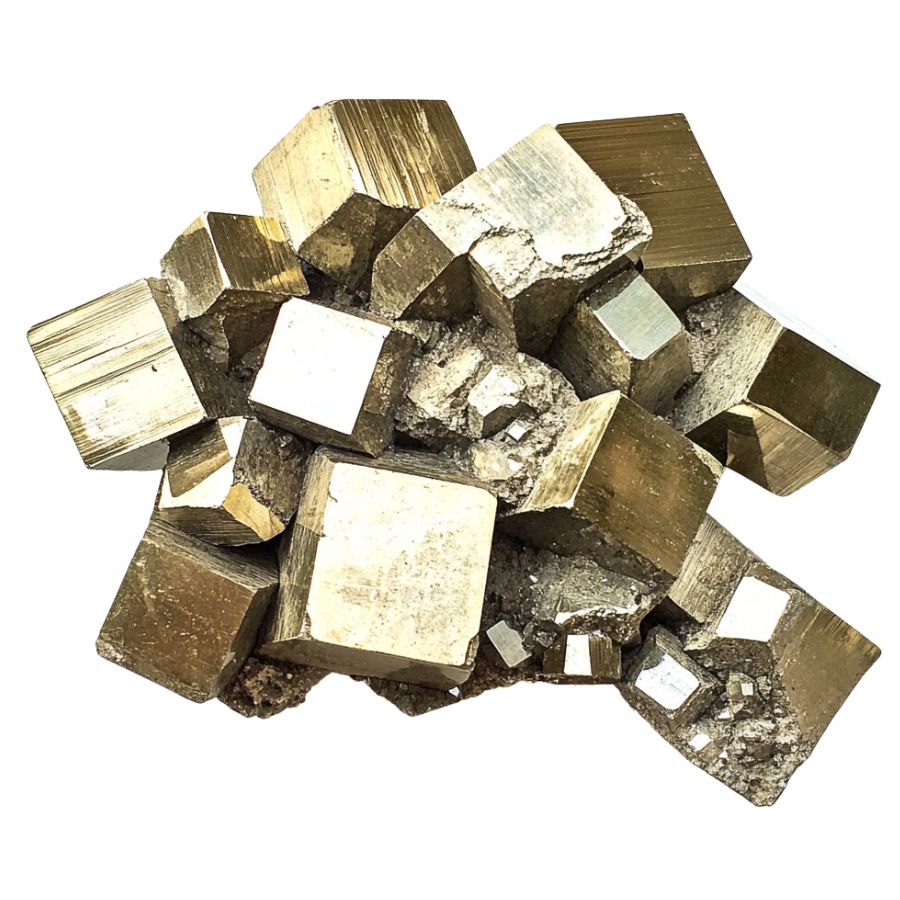
Luster refers to how a crystal’s surface interacts with light. Some crystals might have a shiny, glassy luster, while others may appear metallic or dull. This characteristic can help you determine the type of crystal you’ve found.
However, it’s important to remember that luster isn’t always obvious right away. In some cases, a crystal’s true luster will only become apparent after it’s been cleaned or polished, so keep this in mind as you examine your finds.
Evaluate the transparency
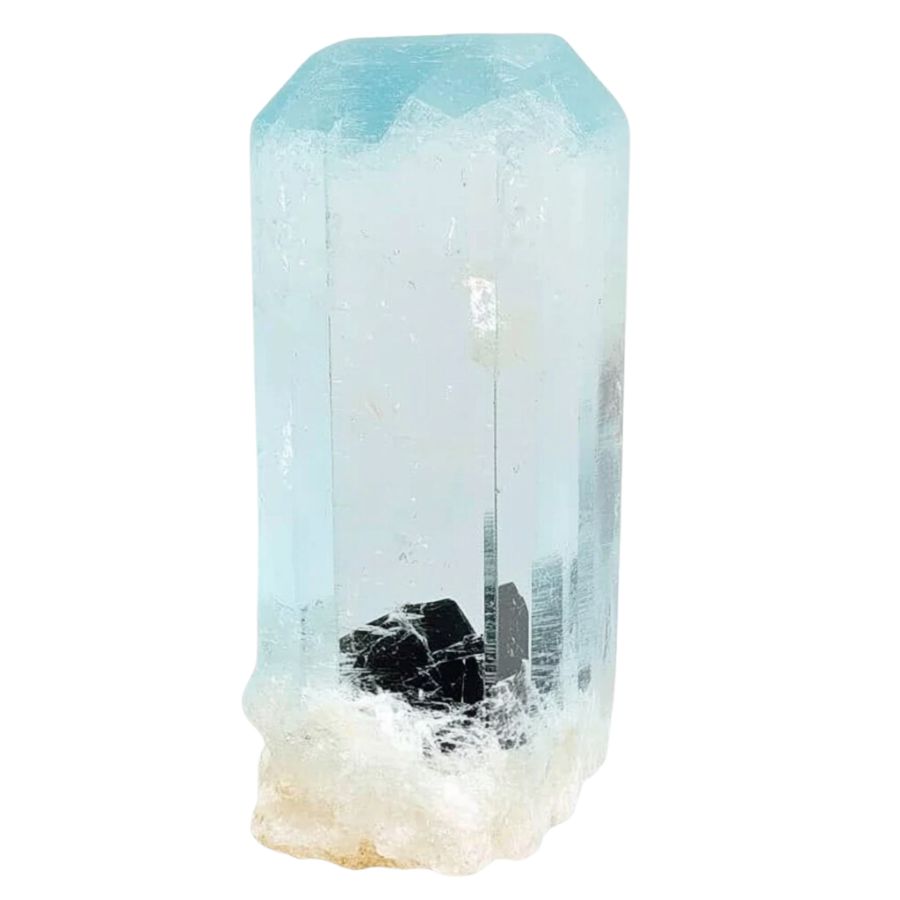
Pay close attention to how much light passes through the crystal. Some crystals are completely clear, allowing light to pass through easily, while others may be opaque and block light entirely.
You might also encounter crystals with translucent edges but opaque centers. These variations in transparency can offer valuable clues about the type of crystal you’ve found, making it easier to identify and appreciate your discovery.
A Quick Request About Collecting
Always Confirm Access and Collection Rules!
Before heading out to any of the locations on our list you need to confirm access requirements and collection rules for both public and private locations directly with the location. We haven’t personally verified every location and the access requirements and collection rules often change without notice.
Many of the locations we mention will not allow collecting but are still great places for those who love to find beautiful rocks and minerals in the wild without keeping them. We also can’t guarantee you will find anything in these locations since they are constantly changing.
Always get updated information directly from the source ahead of time to ensure responsible rockhounding. If you want even more current options it’s always a good idea to contact local rock and mineral clubs and groups
Tips on where to look
Having a better idea of where to look can greatly narrow down your search and increase your chances of finding crystals. By focusing on environments where crystals are likely to be exposed, you can spend less time searching and more time discovering.
Outcrops and Exposed Rock
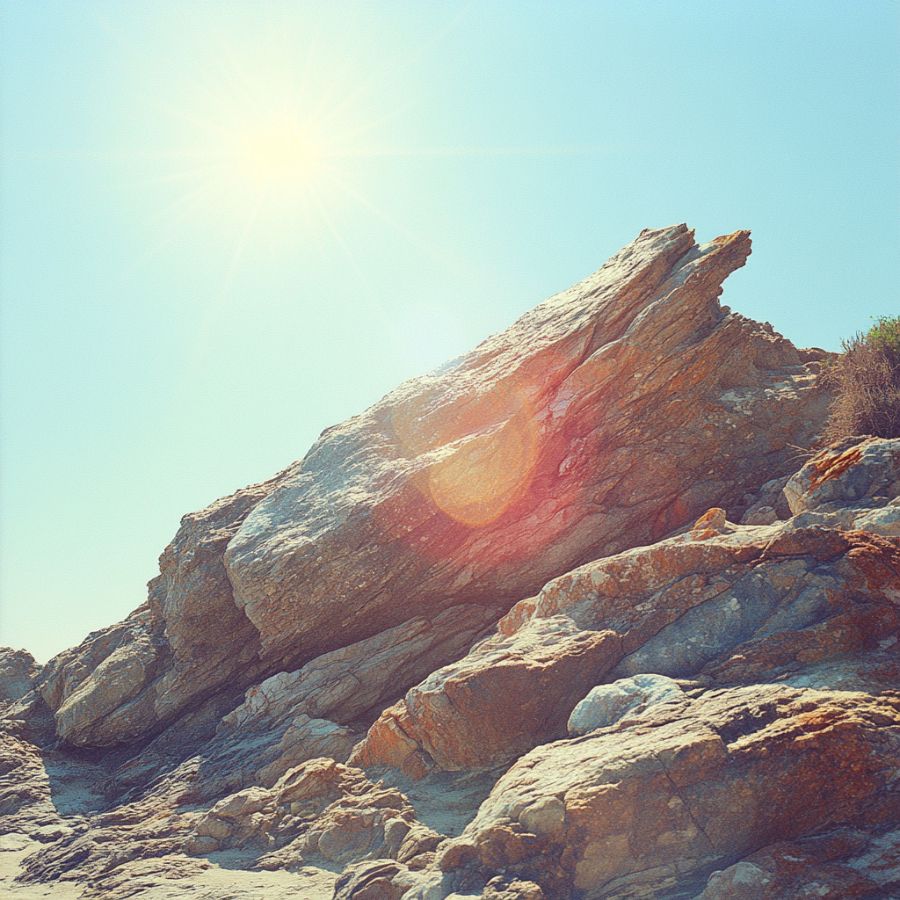
Rocky outcrops are prime locations for finding crystals and minerals. Search along the edges of outcrops, particularly where erosion has worn away the surrounding soil, revealing the rock underneath.
Pay close attention to any visible cracks, crevices, or small cavities within the outcrop, as these are often where crystals develop and can be extracted with minimal effort.
Stream Beds and Gravel Deposits
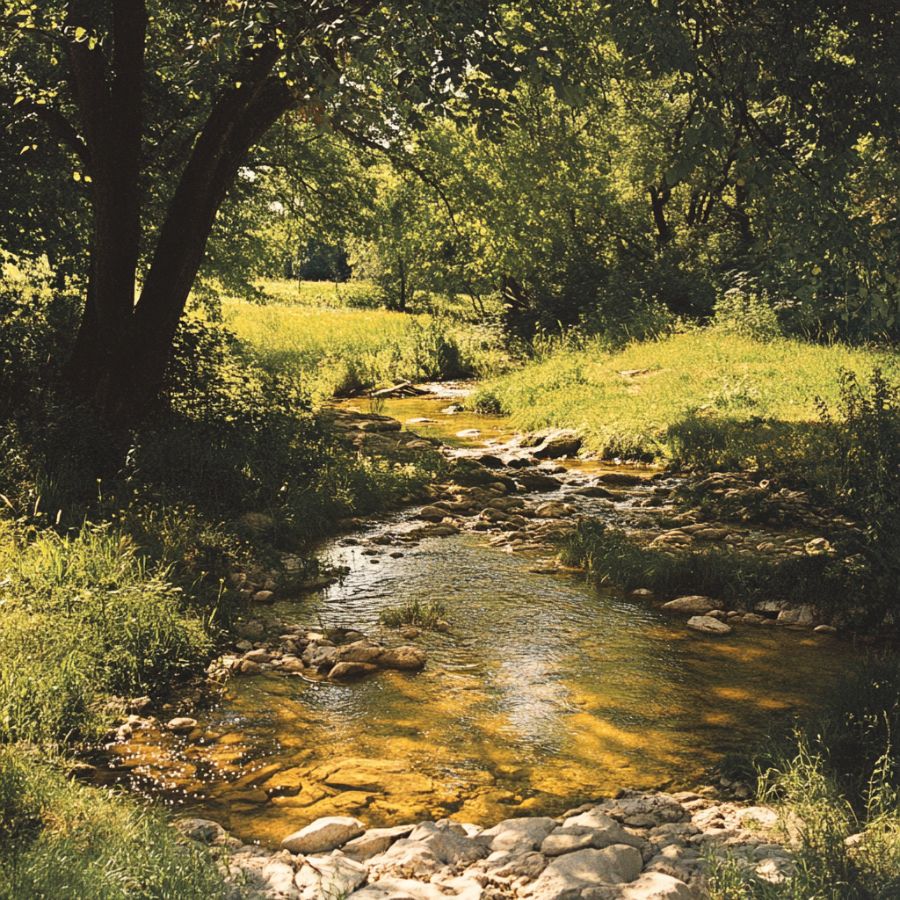
Stream beds are dynamic environments where water flow constantly shapes the landscape. Over time, water can erode rocks upstream, breaking them down and carrying mineral fragments, including crystals, downstream.
When searching in these areas, look for spots where the current has slowed, such as bends in the stream or areas behind large rocks, as these are prime locations for deposits.
Quarries and Mines
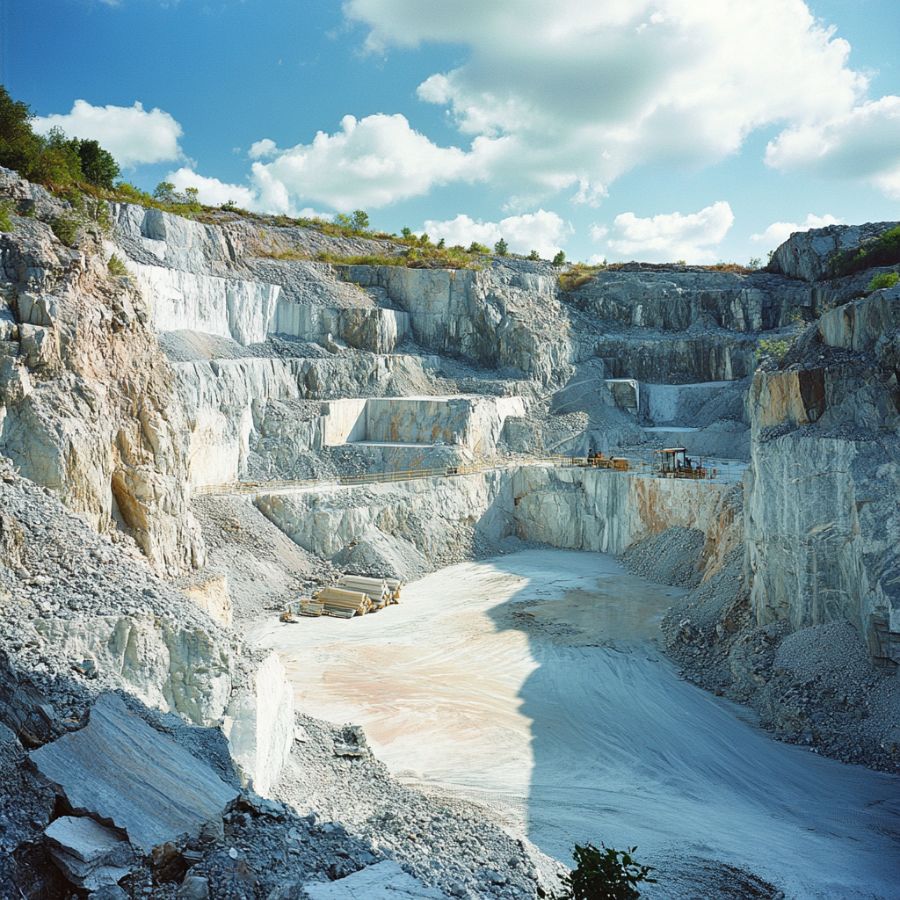
Quarries and mines are excellent places to search for crystals because they expose deep layers of rock that would otherwise be hidden beneath the surface. These sites often contain a variety of minerals and crystals that have been brought to the surface during excavation.
Pay attention to tailings piles, where waste rock is discarded, as they often contain overlooked or broken crystals. Always prioritize safety when exploring these areas and ensure that you have permission to search.
Road Cuts and Construction Sites
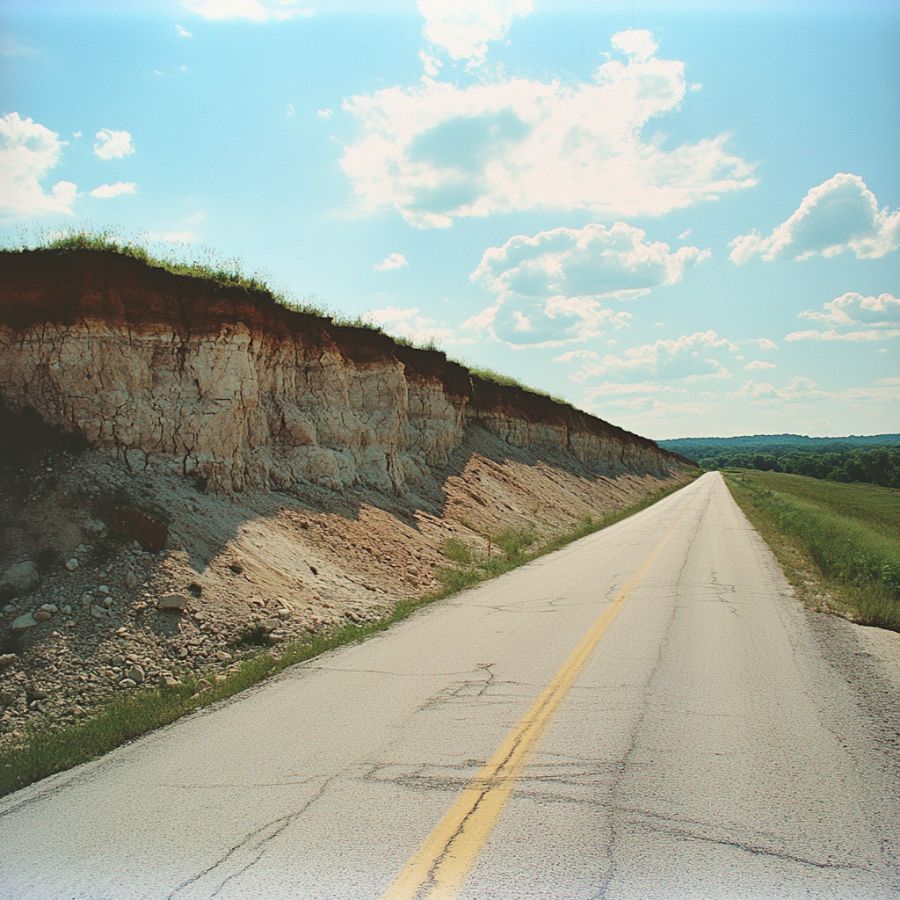
As roads are cut through hillsides or construction projects dig deep foundations, layers of rock and soil that have been undisturbed for millions of years are suddenly exposed.
Look for freshly exposed rock faces, especially where blasting has occurred, as this can create fissures or expose pockets filled with crystals. Be cautious around active construction sites, and always seek permission before exploring.
Mountainous Areas

In mountainous regions, erosion caused by wind, rain, and ice can wear away the softer rock, exposing harder crystals that have formed within. Focus on weathered and broken rock formations.
Look for scree slopes, where loose rock has accumulated at the base of cliffs. Additionally, areas near fault lines or volcanic vents are particularly promising, as they often have a higher concentration of minerals.
DON'T MISS OUT ON ANY GREAT FINDS!
While you're out searching for Crystals you're going to find A LOT of other interesting rocks and minerals along the way. The last thing you want to do is toss out something really interesting or valuable. It can be easy to misidentify things without a little guidance.
We've put together a fantastic field guide that makes identifying 140 of the most interesting and valuable rocks and minerals you will find REALLY EASY. It's simple to use, really durable, and will allow you to identify just about any rock and mineral you come across. Make sure you bring it along on your hunt!
Montana Crystal Mining Laws And Regulations
It’s legal to conduct crystal mining in Montana, provided that you comply with our local laws, especially those mandated by the Montana Department of Environmental Quality, which regulates this activity.
These include securing all necessary documents before proceeding to your exploration and strictly observing any existing guidelines to protect the environment and wildlife of the area.
- The extensive local experience and understanding of our team
- Input from multiple local crystal hunters and crystal collecting groups
- The accessibility of the crystal mining locations
- Safety and potential hazards when collecting
- Private and public locations
- A desire to include locations for both experienced crystal hunters and those who are just starting out
Using these weights we think we’ve put together the best list out there for those who love finding new crystals for our collections!
The Best Locations For Crystal Mining in Montana
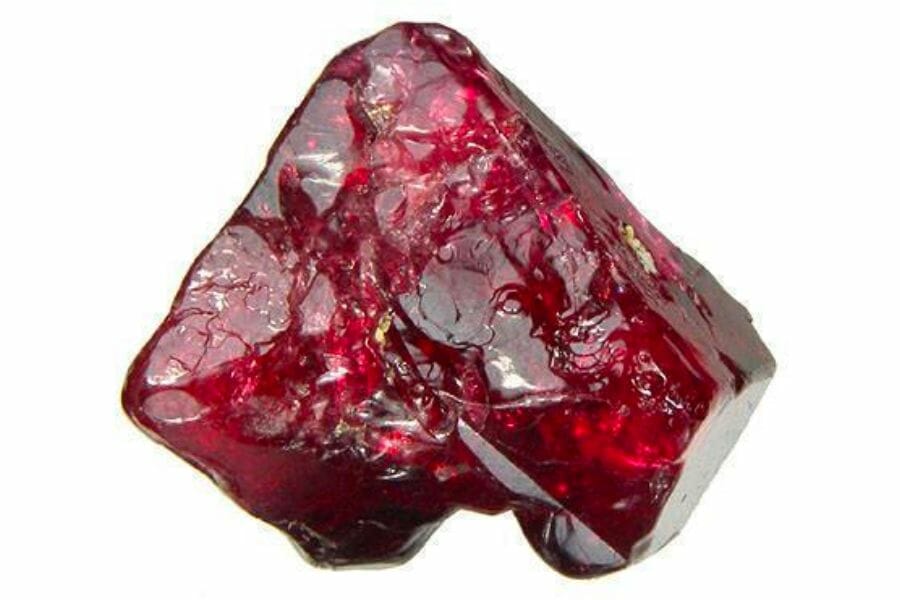
Here are what we consider the best spots for crystal hunting in our state based not only on our personal experiences visiting them, but also on the recommendations of other experienced rockhounds in the area.
Always Confirm Access and Collection Rules!
Before heading out to any of the locations on our list you need to confirm access requirements and collection rules for both public and private locations directly with the location. We haven’t personally verified every location and the access requirements and collection rules often change without notice.
Many of the locations we mention will not allow collecting but are still great places for those who love to find beautiful rocks and minerals in the wild without keeping them. We also can’t guarantee you will find anything in these locations since they are constantly changing.
Always get updated information directly from the source ahead of time to ensure responsible rockhounding. If you want even more current options it’s always a good idea to contact local rock and mineral clubs and groups
Crystal Park is Our Favorite Crystal Mine in Montana
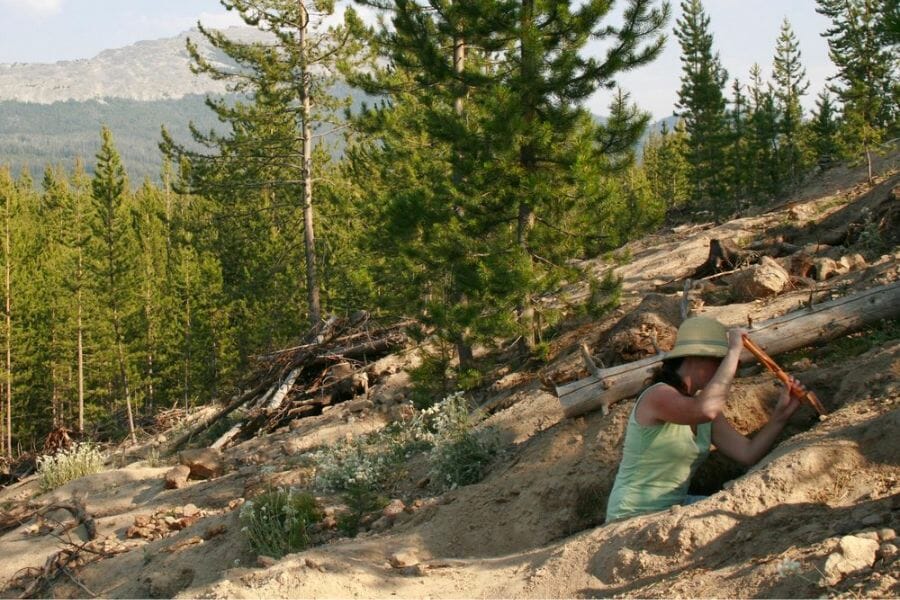
Pioneer Mountains, Southwest MT
Located in the Pioneer Mountains, Crystal Park is a unique location that has attracted rockhounds for decades. It’s designated as a recreation area by the Forest Service in the 1950s and has since been a popular destination for rockhounds.
The reason it’s so popular among rockhounds is because the area is perfect for crystal formation. It’s situated on top of a high ridge that’s made up of volcanic rock, which has been eroded over time by glaciers, leaving behind a rich deposit of crystals.
Crystal Park is located about 60 miles southwest of Bozeman. To get here, you’ll need to take a dirt road for about 10 miles, so make sure you have a vehicle that can handle rough terrain. The park is open from Memorial Day to Labor Day, and there is a small fee for admission.
Where we found crystals at Crystal Park
What’s pretty great about Crystal Park is that you can practically search for crystals in any part of the area. Here, you can find amazing pieces of Amethyst and Quartz crystals.
DON'T MISS OUT ON ANY GREAT FINDS!
While you're out searching for Crystals you're going to find A LOT of other interesting rocks and minerals along the way. The last thing you want to do is toss out something really interesting or valuable. It can be easy to misidentify things without a little guidance.
We've put together a fantastic field guide that makes identifying 140 of the most interesting and valuable rocks and minerals you will find REALLY EASY. It's simple to use, really durable, and will allow you to identify just about any rock and mineral you come across. Make sure you bring it along on your hunt!
Rock Creek
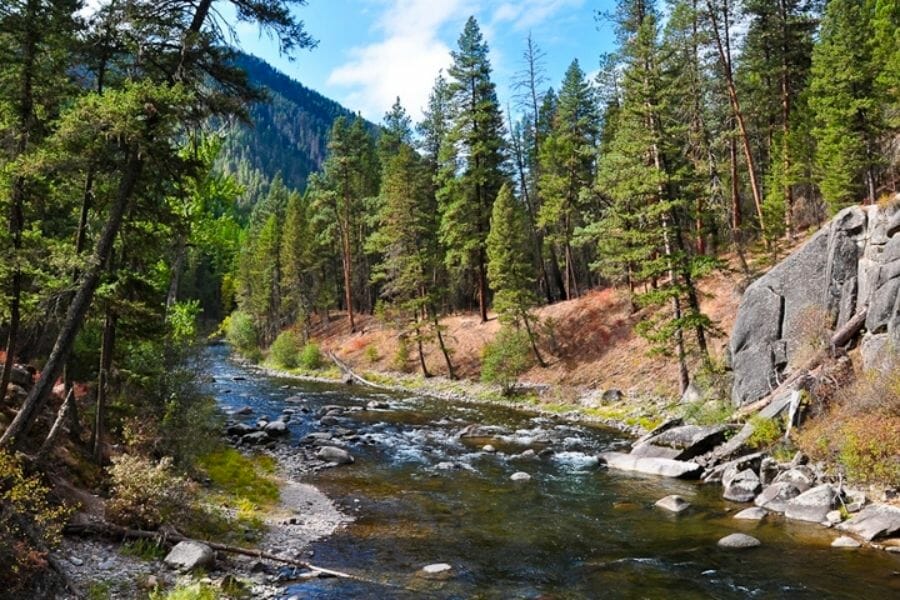
Granite County, MT
Back in the 1800s, gold was discovered in the area of Rock Creek. And to this day, the creek remains known for its abundant crystal formations and attracts rockhounds from all over the country.
Rock Creek flows through a canyon made up of granite, gneiss, and schist, which are all known for producing high-quality crystals. One of the best things about this spot is that the crystals are easily accessible. You can simply walk along the creek and find crystals just lying on the surface of the ground. Of course, you can also dig in the gravel and dirt to find even more crystals.
To reach this creek, head to Philipsburg and follow the signs to the Rock Creek Recreation Area. Once you’re here, you’ll need to hike down to the creek, so make sure to wear appropriate footwear.
Where we found crystals at Rock Creek
We suggest exploring the area gravels of Rock Creek, particularly in Anaconda and Sapphire gulches, and along all its tributary draws, where you can find samples of Quartz and Sapphire crystals.
Curious about the value of these natural wonders? Read our article on crystal prices here.
Missouri River
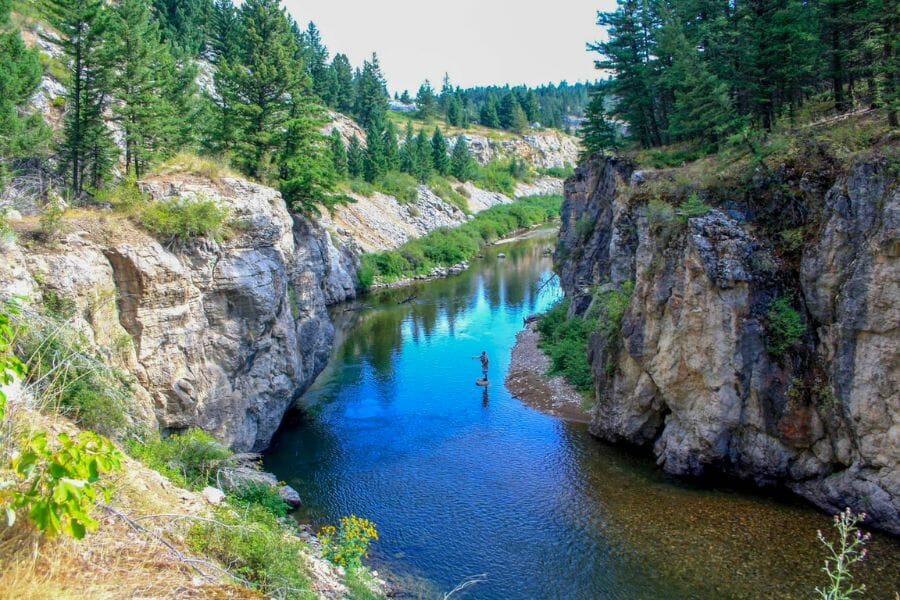
Lewis and Clark County, MT
Missouri River is the longest river in North America. It’s well known that the river has played an important role in the history of the United States, but did you know that it’s also a great place to find crystals?
The river runs through some of the most diverse geology in the country, making it a prime location for crystal formation. The geology of the river itself is complex, with layers of sandstone, shale, limestone, and other sedimentary rocks. These rocks provide the perfect environment for crystal formation, and you can find a wide variety of crystals in the river.
If you want to explore here, you’re in luck because the crystals here are found in the riverbed, which means you don’t have to dig to find them. Instead, you can walk along the riverbank and look for crystals that have been washed up by the current. The best time to go crystal hunting here is during the low water season, which typically occurs in late summer and early fall.
Where we found crystals at Missouri River
You can explore in the gravels near Helena to find stunning specimens of Chalcedony, Garnet, Kyanite, Sapphire, and Topaz crystals.
Yogo Gulch
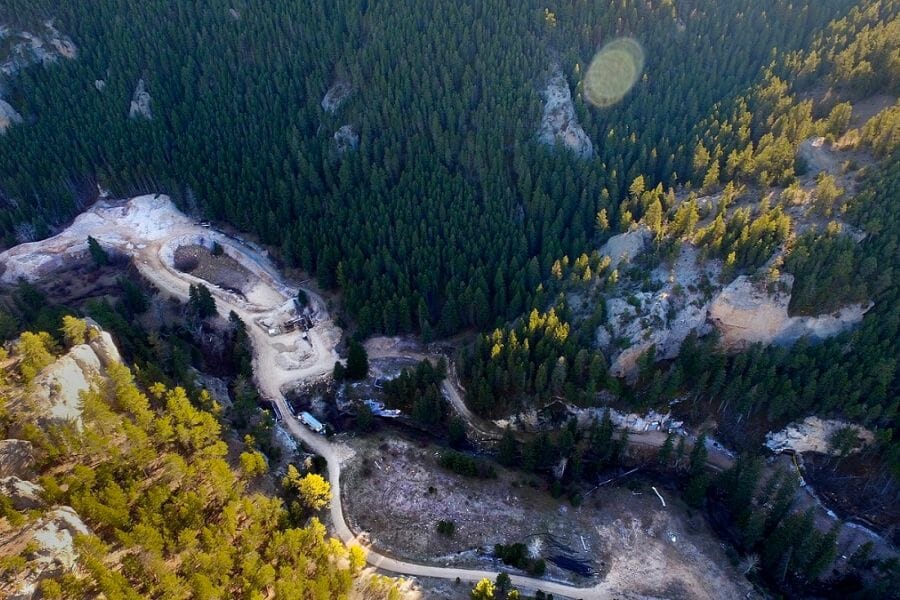
Judith Basin County, MT
Yogo Gulch is a historic location with a rich mining history dating back to the late 1800s. Located in the Little Belt Mountains in central Montana, the gulch is known for its world-famous Yogo Sapphires.
Yogo Gulch’s geology is fascinating, with layers of limestone and dolomite that have been altered by heat and pressure. This process has created the ideal conditions for crystal formation, and you can find a wide variety of crystals in this area aside from Sapphires.
Planning to visit here? The best news is you don’t have to pack much gears because you don’t need any special equipment to find crystals. You can simply walk along the creek bed and look for crystals that have been washed down from the mountains. However, it’s important to note that the area is located on private property, so you’ll need to get permission from the landowner before you start your search.
Where we found crystals at Yogo Gulch
Located at foot of Little Belt Mountains, you can explore the area’s igneous dikes intruded into limestone outcroppings on the hills above the gulch. By searching here, you can find stunning samples of Ruby and Sapphire crystals.
Jefferson River
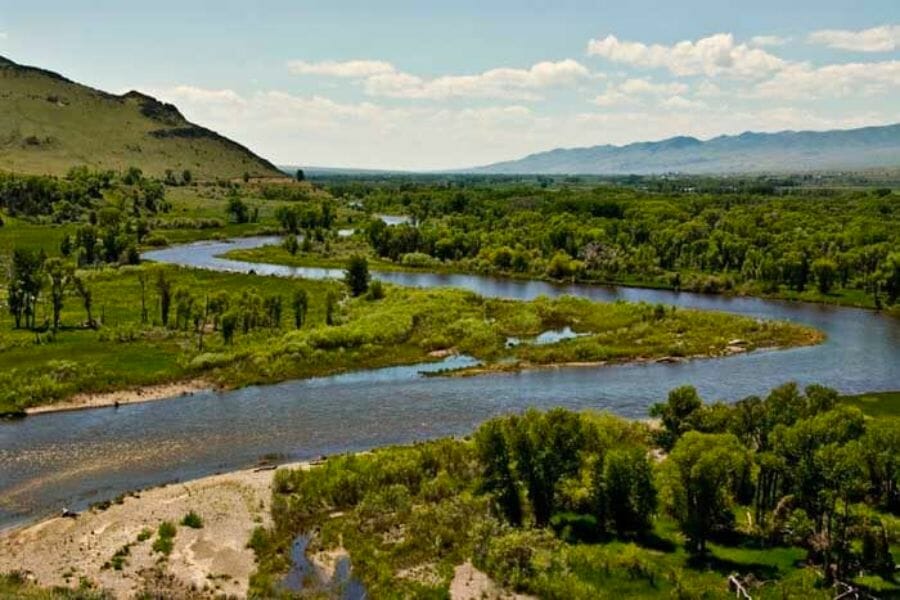
Madison County, MT
A tributary of the Missouri River, Jefferson River was named after President Thomas Jefferson, who commissioned the Lewis and Clark Expedition to explore the western territories of the United States.
This river is a prime location for crystal formation because it’s rich in metamorphic rocks, which have been altered by heat and pressure to create ideal conditions for crystal growth. Aside from its rich crystal deposits, Jefferson River also offers a stunning scenery. Just look at its photo! The river winds through picturesque valleys and is surrounded by mountains, making it a beautiful location for a rockhounding adventure.
If you want to go here, head to the town of Twin Bridges and take Highway 41 south towards the river. You can park at one of the many public access points along the river and start your search. When hunting for crystals, it’s important to be patient and thorough. Walk along the riverbanks and scan the gravel bars for any signs of these natural wonders. You can also use a shovel and bucket to dig into the gravel and search for crystals.
Where we found crystals at Jefferson River
Search through the gravels of Jefferson River to find crystals like Agate, Chalcedony, and Jasper.
Our Other Favorite Places For Crystal Hunting
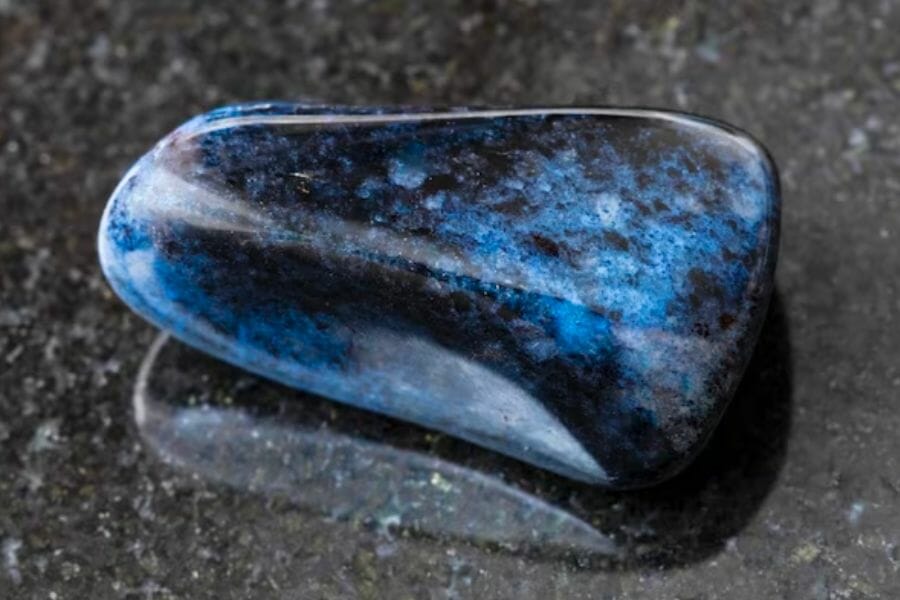
Aside from the best crystal hunting places that we shared above, there are tons more pretty great spots to find crystals here. We’ve listed them down below for your easy reference. Plenty of these spots are also great sites to find Montana geodes, so visiting them will be totally worth it!
Where you can find crystals for free in Montana
With Montana’s vast area, there are many free-to-search areas here that not only contain amazing crystal reserves, but will also give you a chance to appreciate our state’s beautiful landscapes.
| County | Location |
| Beaverhead | Upstream along Sawmill Creek to the headwaters just below the Continental Divide |
| Big Horn | All area surfaces, especially along the canyon rim in Hardin |
| Carbon | 5 miles north in Pryor Mountains |
| Cascade | Along both sides of the Sun River and on both sides of US-89 |
| Choteau | Area of the Bearpaw Mountains at the Black Diamond prospect |
| Custer | At the Yellowstone River, Pumpkin Creek Bridge, and Powder River |
| Dawson | All regional surfaces, draws, and washes at Glendive |
| Deer Lodge | At Dry Cottonwood Creek |
| Fergus | Railroad bridge in area of Ross Fork |
| Gallatin | On Mount Blackmore close to summit |
| Garfield | Upstream and down in Big Dry Creek |
| Jefferson | In Hay Canyon at the Gem Queen claim |
| Lewis and Clark | Upstream on both sides of Elk Creek to mouth of Smith Creek |
| Madison | Pole Creek area gravels |
| Mineral | Snowbird property |
| Park | Area draws, Creek beds, and hillsides in Carbella |
| Powell | Area placers in Montana Territory, veins in granite |
| Prairie | East and North of the Yellowstone River, in side tributaries of Craker-box, Hatchet, Sand, and Whoop-up creeks |
| Rosebud | Upstream and along down along west shore of Tongue River |
| Silver Bow | East to Little Pipestone Creek and east to west form of Radar Creek |
| Yellowstone | Along both sides of Buffalo Creek |
Sometimes, we can confuse different common crystals between each other, so to help you sort them out and tell them apart, we’ve created a few guides you can use:
Other great places to dig for crystals
If you want a greater chance to find amazing crystal specimens in their natural environment, you can visit the following places that require a certain fee before any exploration. These fees may vary depending on season (or they could be free!), so reach out first before heading out.
| County | Location |
| Broadwater | White Creek area mines |
| Carbon | Coal mine in Fromberg |
| Cascade | At the Hartley Mine |
| Deer Lodge | At Rable Mine and Cable Mine |
| Granite | Philipsburg area mines |
| Jefferson | At the Pohndorf Amethyst Mine |
| Lincoln | 4 miles southwest at the Rainy Creek mines |
| Madison | At the Bismark Mine |
| Missoula | Greenough area mines adn placers on Elk Creek |
| Phillips | Area old mines of Landusky |
| Silver Bow | At the Alice Mine, East Colusa Mine, Emma Mine, Kelley Mine, Leonard Mine, and Lexington Mine dumps |
The Best Crystal Shops In Montana
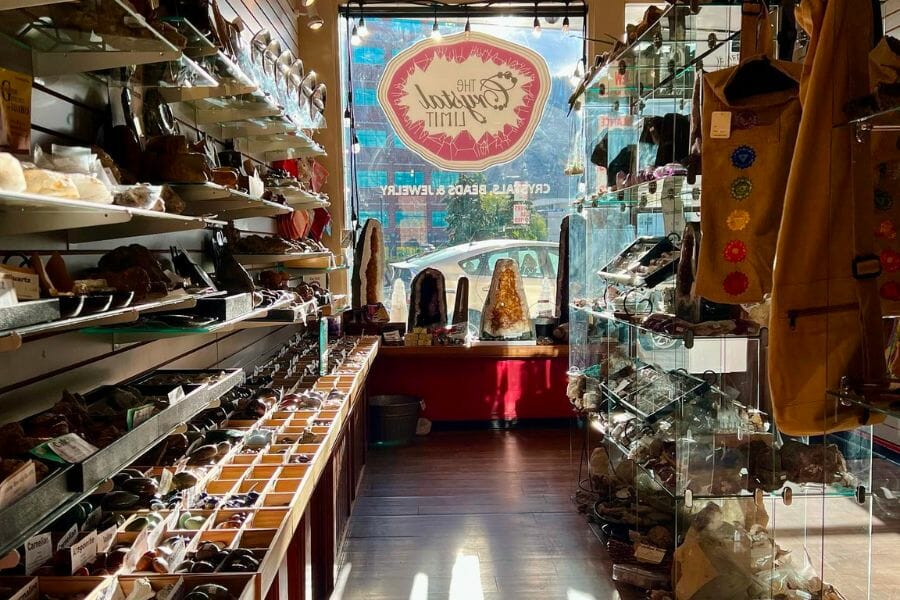
With the many pretty great spots to find crystals in Montana, it can be overwhelming to just choose one or two. If you want to be able to choose from a great selection of crystals without much sweat, visit our local crystal shops here. Below are some of the best ones that we have.
- The Crystal Limit – 119 S Higgins Ave, Missoula, MT 59802
- Stones and Bones Lapidary Jewelry – 701 24th St W #1, Billings, MT 59102
- Crystal Imports – 500 S Russell St, Missoula, MT 59801
- Craggy J Natural Arts – 7513 Montana Hwy 35, Bigfork, MT 59911
- Earth’s Treasures – 25 N Willson Ave # B, Bozeman, MT 59715
- Treasure Outpost Rock Shop – 3555 US-93, Kalispell, MT 59901
- Between the Worlds – 205 W Main St, Hamilton, MT 59840
- Windy Way Rock Shop – 5237 US-89 #13, Livingston, MT 59047
- Blaze-N-Gems Rock and Jewelry Shop – 3570 York Rd, Helena, MT 59602
- Trex Agate Shop – 5500 US-89, Bynum, MT 59419
Additional places to find crystals in nearby states
If you’ve already tried all of our recommendations above or are planning a trip out of the state, you should check out our guides for neighboring states:
If you have any recommendations we haven’t covered, please leave them in the comments below!

